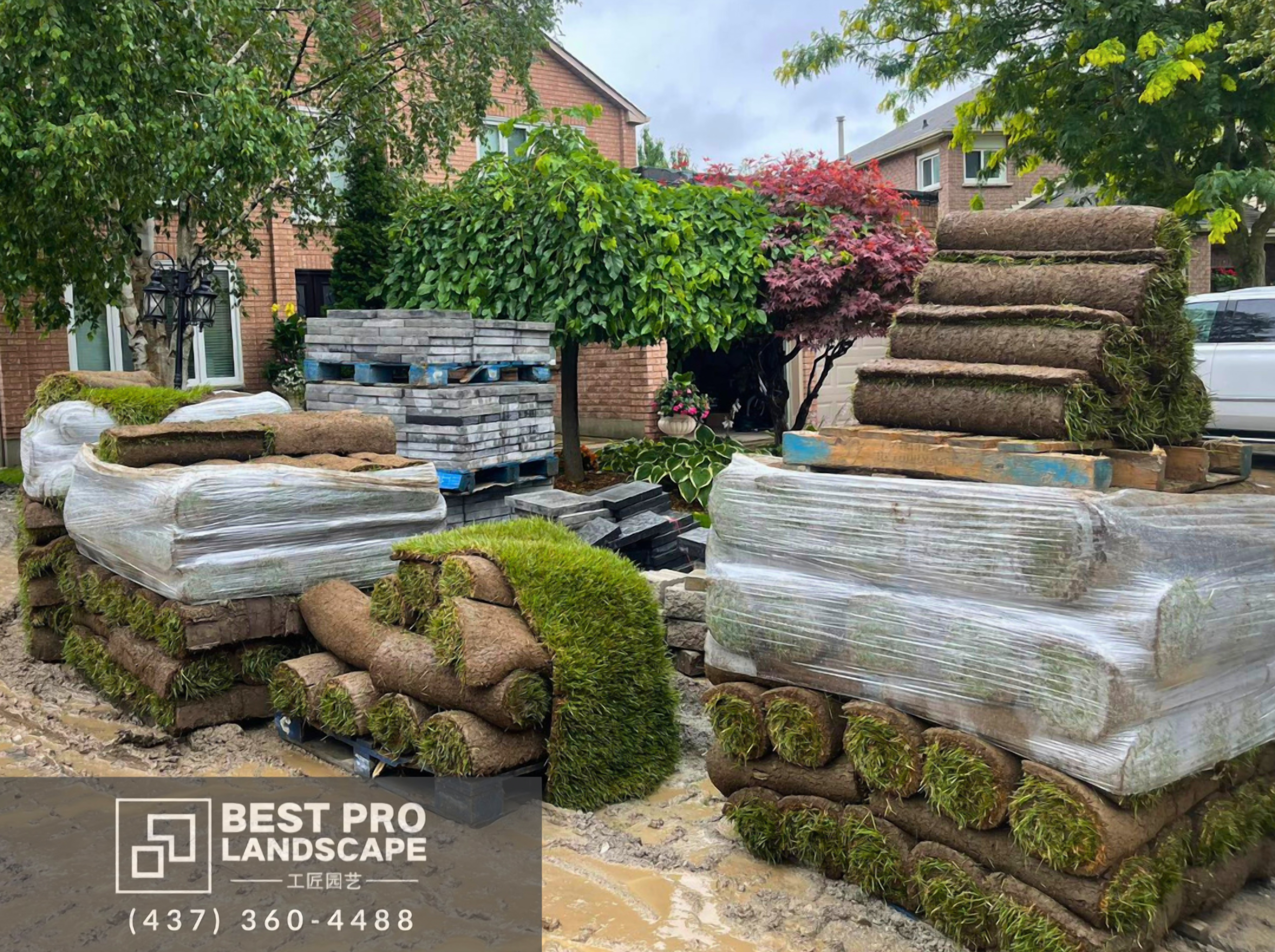Sod Installation

Cultivated turf allows you to enjoy a lawn of instant beauty and maturity without the usual time-consuming hassles of seeding. The following are the basic steps to a beautiful lawn.
STEP 1 – Measuring and Ordering
With a tape, measure the area of your planned lawn. Include these measurements on a sketch of the lawn area, with the length, width, and any unusual features. If your lawn is not a perfect square or rectangle, the easiest way to determine how much sod you need is to break your lawn into regular shapes and measure the area of each shape individually. For example Fairgreen Sod will be happy to determine the amount of turfgrass sod you will need from your sketch. Each roll of sod is 2 feet by 4.5 feet and covers an area of 9 square feet.
Schedule your order for delivery of turf after preparatory work is completed and you are ready to install. Fairgreen offers next day delivery; so once all your prep work is complete just give us a call. Prompt installation on the day of delivery is crucial to a strong beginning for your lawn. Sod left on a skid will not last more than 6 hours in the summer heat.
STEP 2 – Soil Preparation
Clear the site of all building materials (wood, cement, bricks, etc.), as well as any buried stumps, rocks, stones or other debris that is larger than 4-5 cm (2-3 inches) in diameter.
Rough grade the entire area to eliminate any drainage problems on the property. This would include sloping the grade away from building foundations, eliminating or reducing severe slopes and filling low-lying areas. A tractor-mounted blade and/or box are most often used for rough grading, but if the area is smaller, it can be done with hand tools. The rough grading will probably uncover more debris that should be removed and not buried.
Initial tilling, to a depth of at least 5 cm (2 inches), should be completed prior to adding any topsoil or soil amendments. This will control most annual weeds, alleviate subsoil compaction and permit a bonding of the topsoil to the subsoil and improve root penetration and water movement.
Add topsoil to achieve a total topsoil depth of 10-15 cm (4-6 inches), after firming. The topsoil should be a loamy sand, sandy loam, clay loam, loam, silt loam, sandy clay loam or other soil suitable for the area. To the extent possible, practical, affordable and available, incorporate humus (fully decomposed organic matter) into the topsoil.
Finish grade the entire site, maintaining the rough grading contours and slopes, with a tractor-mounted box blade on large areas or heavy-duty rake on smaller sites.
STEP 3 – Turf Installation
Install your lawn immediately upon delivery of fresh sod. Begin watering your new lawn within 30 minutes of installation. Turf is a living plant that requires ground contact and moisture to survive!
Begin installing turf along the longest straight line, such as a driveway or sidewalk. Butt and push edges and ends against each other tightly, without stretching. Avoid gaps or overlaps. Stagger the joints in each row in a brick-like fashion, using an exacto knife to trim corners, etc. Avoid leaving small strips at outer edges as they will not retain moisture. On slopes, place the turf pieces across the slope.
To avoid causing indentations or air pockets, avoid repeated walking or kneeling on the turf while it is being installed or just after watering.
After installing the turf, roll the entire area to improve turf/soil contact and remove air pockets.


STEP 4 – Watering
Give your new lawn at least 2 to 3 cm. (1 in.) of water within 1/2 hour of installation. Water daily, or more often, keeping turf moist until it is firmly rooted (about 2 weeks). Then less frequent and deeper watering should begin.
Weather conditions will dictate the amount and frequency of watering. Be certain that your new lawn has enough moisture to survive hot, dry, or windy periods. Water areas near buildings more often where reflected heat dries the turf.
Caution:
During the first three weeks, avoid heavy or concentrated use of your new lawn. This gives the roots an opportunity to firmly knit with the soil, and ensures that the turf will remain smooth.
STEP 5 – Enjoy
Your new sod lawn increases your property value significantly. With proper care, it will remain a great asset, providing beauty, a clean playing surface, and an improved environment.
Maintenance:
Mow often, generally removing no more than 1/3 of the grass height at a mowing. Keep your mower blade sharp. Fertilizer applications will depend on climate, sod type, soil, insects, weed and disease conditions.
